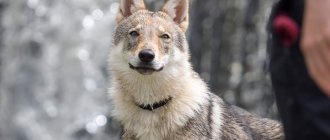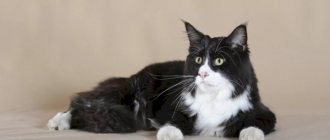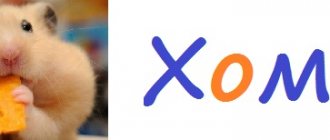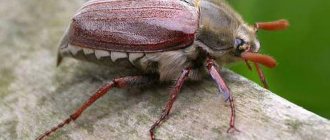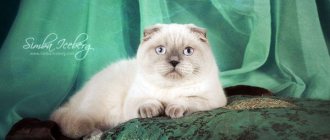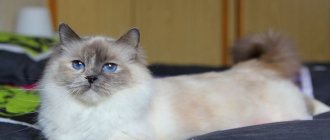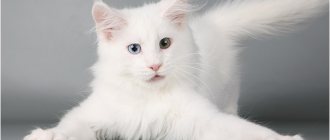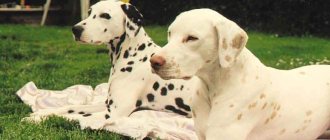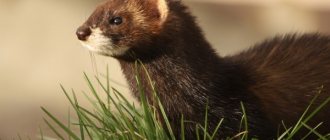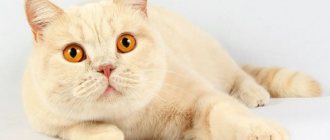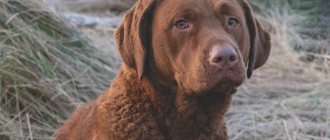A more correct name for this species is the Sungur hamster (Phodopus sungorus), but it was the name “Djungarian” that stuck, coming from the geographical region of China, from where these rodents were brought. They belong to the hamster family and, thanks to the vegetation on their legs, which completely covers their toes, to the genus Bryopods.
These animals can be distinguished by their pointed muzzle, protruding ears, and often by a characteristic stripe on their back.
These cute fluffies reach a maximum of 10 cm in length and are extremely friendly, playful pets, which is why they have become favorites of children. These animals can be distinguished by their pointed muzzle, protruding ears, and often by a characteristic stripe on their back. The tail is quite small in relation to the body, almost invisible, but the head against the background of the body is quite large , with large black (or red, in the case of some albinos) beady eyes, the body shape is round, weight varies from 30 to 65 g .
Dzungariki are very widespread in the southern part of Russian Siberia, Kazakhstan and Khakassia. Due to their habitat, dzhungariks have become popular in Russia. They can even be called the Russian hamster because they live in some of the arid regions of this country.
The white Djungarian hamster is no different from the rest of its relatives
Origin and habitat
The first mention of Djungarians dates back to the end of the 18th century. The German scientist and traveler Pallas described the animal that he encountered on the territory of the Dzungarian region (modern eastern Kazakhstan), initially calling it the Zungarian mouse due to its small size.
In the wild, hamsters prefer to live in deserts, dry steppes, and much less often in forest-steppes.
- Western Siberia.
- Northeast of Kazakhstan.
- Steppes of Mongolia, Korea and China.
- Central Asia and Altai.
The domestication of wild hamsters occurred in the 20th century. People fell in love with tiny pets, thanks to which the dwarfs spread throughout Eurasia. They can be found much less often in America.
Diseases
Alas, representatives of the Dzungarian breed sometimes get sick. At birth, many hamsters suffer from oxygen deprivation, so you need to know how to care for newborn babies. Injuries (fractures, dislocations, bruises, etc.) also occur, usually when the animal falls from a great height.
What else do you need to know about hamster diseases, what are they?
- Diabetes. Djungarians suffer from malnutrition more often than other breeds. To prevent illness, you need to carefully consider your pet's diet.
- Colds. They occur if the fluffy dog is not dried well after bathing or left in a draft. Wet litter can also cause a cold. Djungarians also suffer from viral infections and can pick them up from their owner. To prevent diseases, take care to strengthen your pet’s immunity: give him fresh parsley leaves, lettuce, unsweetened apples, and vegetables.
- Eye diseases. Typically, cataracts in rodents appear closer to old age, but even a baby can get conjunctivitis. The phenomenon is typical for furry cats whose owners rarely tidy their cages.
- Skin diseases. If the animal's fur begins to fall out or dandruff appears, this is an alarm bell. Skin ailments can be caused by frequent stressful situations or individual intolerance to a substance.
- Tumors. They have an acquired or congenital nature. The mechanism and causes of tumor formation in rodents are not fully understood, so no animal is immune. It is only known that an abundance of fatty foods increases the risk of getting sick.
- Parasitic diseases. Caused by rat fleas and ticks.
As you can see, many diseases of Djungarian hamsters can be avoided by following the principles of proper nutrition and taking care of cleanliness in the home. But if your furry miracle does catch some kind of infection, you should immediately consult a veterinarian.
Djungarian hamsters are cute creatures with an unpredictable character. In order for the animal to be healthy, you need to take good care of it. Particular attention should be paid to the nutrition and sanitary condition of his home. If you take proper care of your pet, it will rarely get sick and will be happy to come into your arms!
Colors of Djungarian hamsters
Domesticated rodents, as a result of selection, have acquired a variety of colors, the features of which are a dark stripe and interspersed with light spots on the back, an almost white abdomen and paws. There are main types of colors of Djungarian hamsters.
Standard
The standard color resembles nature. In the wild, it helps animals camouflage against the background of sand and steppe plants. The standard calls for brownish-gray fur on the back and a dark or black stripe from head to tail. The abdomen and paws are white or light gray.
The standard color of the Djungarian hamster is natural.
Albino
Albinos have white fur and pink skin. They have red or pink eyes.
Sapphire
This coloration is characterized by a gray-blue back and a much lighter, to white, belly and paws.
The sapphire-colored hamster has a characteristic gray-blue back.
Pearl
Pearl hamsters have matte white fur with gray patches. Among them there are individuals with a uniform milky color without a stripe on the back.
Mandarin
It is a red color with a brown stripe on the back, with lighter legs and belly.
Mandarin is a red color with light legs and belly.
How to determine age?
Due to the fact that Djungarian hamsters are quite small in size, and they do not grow with age, it is very difficult to find out how old they really are. However, there are several ways to determine the more or less exact age of furry animals.
- The younger the hamster, the more active lifestyle it leads: animals sleep less, move more, and therefore eat more. Old animals, on the contrary, prefer to sleep and eat very little.
- There is practically no hair on the ears of old hamsters, while the ears of young hamsters are completely covered with it.
- Young animals have clear and shiny eyes. With age they become cloudy.
- Newly born hamsters do not have hair - they begin to become covered with hair only on the 5th day of life. After 2 weeks the fur is fully grown.
- Young hamsters aged from 1 to 3 months (and these are the animals you should buy) weigh no more than 40-45 grams.
Features of white color
White dzhungarikas are no different from their relatives, except for their pearl coloring. Often there is no stripe at all on the back of these hamsters. In such cases, the animal is completely dull and milky. Pearly white hamsters are bred by breeders and are loved by breeders.
Albinos, due to a gene mutation, lack the pigment melanin, which is responsible for the color of their skin and coat. Their eyes are red because, in the absence of pigment, the blood vessels in the cornea become clearly visible. The lack of melanin negatively affects the health of hamsters.
The main problems of albinos:
- Skin diseases: lichen, dermatophytosis, tumors and papillomas.
- Vision problems: long-term exposure to sunlight on unprotected eyes can lead to blindness of the animal.
- Lack of melanin: reduces stress resistance of albinos.
The pet must be protected from contact with sunlight.
The cage with a special pet should be placed in a shaded place, protecting the animal as much as possible from contact with direct sunlight.
Nuances of definition for other breeds
The sex of dwarf hamster breeds is more difficult to determine; their testicles are practically invisible. Here you have to focus only on the differences in the distance between the anus and genitals. In addition, the female is distinguished by a smooth lower abdomen, and the male is almost always moist due to the actively working gonads.
Sex characteristics are especially important when purchasing multiple hamsters. In this case, one has to take into account their compatibility, ability to mate and procreate. You should not provoke the early occurrence of these processes, because a female that is too young may face death during childbirth. Therefore, having designated the gender of the acquired pets, it is better to house males and females separately until the girls reach puberty. And it is better not to place two “ladies” in the same cage at all - there is a very high probability that they will not get along in the common territory. Males are more compliant in this regard, but in nature they mostly live alone
It is important to take all these factors into account, and then your pets will be a constant source of positive emotions
Lifestyle of Djungarian hamsters
Adult Djungarians prefer to live alone. They are characterized by territorial division.
Hamsters' burrows are spacious, up to 1 m deep, with many branches and chambers. Separate rooms are equipped for sleeping, storing supplies, and toilets.
Hamsters sleep during the day and forage for food at dusk and at night.
The basis of the diet is:
- seeds, grains, leaves and roots of plants;
- small insects and worms;
- young shoots, berries and vegetables.
A hamster can walk several kilometers in search of food, and stores about 20 kg of food for the winter. Djungarians carry food in subcutaneous bags on the sides of the body.
Adult dwarfs live alone.
This species of the hamster family does not hibernate. In winter, the coat color becomes lighter and blends into the snowy landscape. By cold weather, the hamster's body acquires subcutaneous fat.
If the cold continues for a long time down to -10 °C or the animal experiences stress, then it falls into torpor, a state close to death when the body temperature drops to +20 °C. This is how hamsters minimize energy expenditure and survive.
How they grow day by day
Every day in the life of Djungarian babies some event occurs that leads to their development. They grow stronger, increase in size, become covered with down, and then with wool. All this time caring for the children lies with the mother.
Pay attention to how long hamsters of different breeds live
How long do they grow after birth?
After birth, Djungarian hamsters begin to grow and develop rapidly.
The stages of development of Djungarian hamster babies are presented in the table:
| Life period of the dzhungarik, days | What's happening |
| 1–6 | They scurry around, almost don’t squeak if they’re hungry, don’t hear or see anything, in search of milk they rely on smell |
| 2–3 | Fluff grows, pigmentation appears |
| 6–7 | Ears open and start squeaking |
| 8–12 | They try food in the nest, feces, and crawl around the cage. |
| 12–16 | The eyes open, the increased weight does not allow the mother to return them to the nest as before |
| From the 15th | Able to wash themselves and climb over obstacles |
| 17–20 | They begin to run around in a wheel and may get injured when thrown out |
| 21–28 | The period of separation from the mother and brothers, the stage of the onset of aggression in the mother, the onset of puberty, the possibility of early pregnancy |
| From the 28th | You can give fruit |
| 42–56 | Ready to get a new owner and move to another house |
| From 56th | Fights for territory |
Hamsters grow actively for up to 2–3 months, and within another 2 months they can grow stronger and acquire adult weight.
When they open their eyes
Around the end of the second week of life, babies' eyelids begin to lift. At first a barely noticeable gap appears. At the beginning of the 3rd week, the eyes are already fully open. From now on, you need to make sure that the hamsters sleep in a warm nest, and move them there if they fall asleep in another place.
Rodent character
Djungarian hamsters are militant introverts. They are sensitive to the protection of personal space. These cute rodents fiercely fight the enemy if he encroaches on their territory. They use teeth and claws, causing terrible wounds. Male Djungarians warn their relatives about the invasion of aliens with sharp sounds, standing on their hind legs.
Domesticated animals also like to live alone. Hamsters quickly get used to people, they willingly allow themselves to be picked up, they like gentle stroking and calm speech. They are inquisitive and nimble. If you make sudden movements and make frightening sounds, the hamster may scratch and bite.
Why know gender?
There are a number of reasons why gender determination is indispensable:
- Without knowing the gender, it is difficult to choose a nickname.
- If you plan to keep several animals, knowing the sex will help to avoid problems with the placement of animals, since females and males are aggressive towards each other, then they must be kept separately.
- An animal purchased in a store can present a surprise in the form of pregnancy, and if you are not inclined to take care of a family of hamsters, then it is better to purchase a male.
- To avoid purchasing same-sex hamsters.
In addition, males are less aggressive and more friendly towards people.
Briefly about caring for dzhungarika
In the wild, hamsters of this species live on average 1 year. If you follow simple rules for keeping dwarfs, their life expectancy in captivity can be on average 2 years, sometimes 3 and very rarely 4 years.
Selecting a cage and accessories
When choosing a cage, you should consider that:
- its area should not be less than 30x50 cm: the hamster needs enough space for an active life;
- high cages are dangerous for hamsters: the animals love to climb the bars, and falling from a height often leads to injury and death;
- It is not advisable to buy a multi-tiered cage with complex staircase structures: for Dzungarians such a home is dangerous for injury.
The hamster cage should have a large area.
The bottom of the cage is lined with special filler from a pet store. You can use sawdust from fruit trees and finely torn paper napkins and towels as available materials.
Pieces of fabric, cotton wool and hay should not be allowed to get into the cage.
The main accessories for arranging the cage are a running wheel and a rest house. The size of the wheel should be at least 18 cm in diameter to prevent curvature of the hamster's spine during running. It’s better to buy a house without windows - animals often get stuck in them.
Nutrition and diet
The basis of nutrition for domestic hamsters is balanced dry food from a pet store. As wet additives, you can offer your pet lettuce, parsley, cucumbers, and zucchini. If you are deficient in protein, lean pieces of boiled chicken help well.
Vegetables and fruits containing a lot of sugar are contraindicated for hamsters due to their predisposition to diabetes. Also, you should not treat your hamster to insects from the street, so as not to infect him with parasites.
The domestic hamster eats balanced dry food.
There should always be enough fresh water in a special drinking bowl. You cannot put a bowl of water in the cage. A wet hamster may get sick.
Necessary socializing and play time
Evening is the best time to communicate with pets. During the day you should not disturb hamsters - this is a time for rest and recuperation. Half an hour is enough to pamper your pet in your hands, clean the cage, and change the water. Then all that remains is to observe the behavior of the dwarf in the active phase of the day.
Number of individuals in one cell
Only one individual will live comfortably in one cage. If you house at least two, then both hamsters will constantly experience stress and fight, which will negatively affect their health and life expectancy.
The female is placed with the male only for mating, after which she goes to her cage.
Health and hygiene
A healthy hamster looks beautiful, behaves actively, communicates willingly, and has a good appetite.
There are not many conditions sufficient to keep a pet in good shape:
- fresh food and water;
- conditions for sufficient physical activity;
- purity;
- sole ownership of the cage;
- absence of sharp and loud sounds;
- location of the cage out of direct sunlight.
What to feed at home
Djungarians are not picky about food, but to keep your pet healthy, you need to give it a varied diet. You should feed twice a day (morning and evening).
What is possible
The best option would be store-bought mixtures for hamsters, which contain the grain products they need.
But it is not advisable to feed mixtures alone, so you can include in your rodent’s diet:
- grains (wheat, rye, corn, sunflower seeds);
- vegetables (carrots, zucchini, pumpkin, cucumbers, etc.);
- fruits (apples, apricots (pitted), bananas);
- lean meat (chicken or rabbit);
- boiled eggs;
- skim cheese;
- nuts;
- greens (lettuce or plantain).
The diet is compiled individually, according to the preferences of the animal. Give your pet so much food that the next day there will be almost nothing left of the portion (make sure that he really ate everything and did not hide it in reserve).
Find out what you can and cannot feed Djungarian hamsters at home.
Soon you will decide for yourself how much to give. The ratio of various components is also determined individually, taking into account the fact that it is useful to diversify food.
Approximate daily diet:
- fresh herbs – 300 g;
- vegetables – 50 g;
- cereals – 20 g;
- root vegetables – 15 g;
- bread – 15 g;
- hay – 10 g;
- milk – 10 ml.
Occasionally you can pamper your pet with strawberries or raspberries, but it is better not to overdo it with berries. In addition, we must take into account that although hamsters drink little, the presence of fresh water is necessary.
A little about the colors of Djungarian hamsters
Good day to all! My name is Masha and I really love animals. In this article I will tell you about the colors of Djungarian hamsters!
What they are and how they turn out, don’t close the tab and study with me!
And so, let's start with those colors that are most common and they are called single-gene colors
.
Why single-gene? Because there is only 1 gene in the gene code of these colors!
It's that simple, yes.
The very first color is standard
. His gene code is called AA. A standard hamster's eyes should be black.
The second color of Djungarian hamsters is sapphire
. His gene code is called dd. And he's recessive. The sapphire's eyes are also black.
The third color will be tangerine
. His gene code is called Mama. And it is dominant and lethal. The eyes are also black.
The fourth color of the Djungarian hamster is called yellow KG
. This color is considered a hybrid mutation. Its gene code is called pp. And he's recessive. This hamster has red eyes.
The fifth color is called brown
. This color is also considered a hybrid mutation. Its gene code is called mm. And he's recessive. The eyes are dark ruby color.
And the sixth color is called black
. This color is also considered a hybrid mutation. Its gene code is called aa. And he's recessive. The eyes are black.
INTERESTING TO KNOW:
A recessive gene is one that will not appear in the first generation, but will appear in the second and subsequent ones. A dominant gene is a gene that suppresses other genes in the first generation. Lethal gene - upon reaching sexual maturity, it can cause the death of an individual.
There are also two-gene, three-gene and four-gene combined colors. But I will tell you about them in the next article! And so as not to miss out, don’t forget to subscribe to us! We are trying to be better.
Source
Reproduction
Djungarian hamsters become sexually mature at four weeks of age. It is during this period that children of different sexes must be separated from each other. Early pregnancy is very dangerous for the female. Placing her with a male “so as not to get bored” is not the best idea. Constant pregnancies will quickly kill the female. It is almost impossible to sell cubs at a high price. Therefore, there is no point in risking the health of the animal.
The female is mated with the male at the age of 4 months. This age is considered optimal for the first pregnancy. After mating, the female and male should be seated, otherwise they can harm each other. Pregnancy lasts about 25 days. 1-11 babies are born. They are completely defenseless and dependent on their mother. Often, for some unknown reason, females abandon their babies or even eat them.
Only healthy adults with known pedigree should be bred. Due to the great external similarity of Djungarian hamsters to Campbell's hamsters, hybrid offspring are born quite often. Since Campbell's hamsters are prone to diabetes, they are able to pass this trait on to their offspring. That is why it is important to breed only purebred Djungarians.
